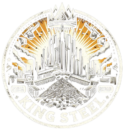TMT
The Rise of TMT Iron in Modern Construction: A Comprehensive Analysis
In the evolving landscape of construction, the quest for materials that offer superior strength, durability, and cost-effectiveness has led to significant technological advancements. Among these, Thermo-Mechanically Treated (TMT) iron stands out as a revolutionary product that has transformed the construction industry. This article delves into the world of TMT iron, exploring its manufacturing process, properties, advantages, applications, and its pivotal role in modern construction projects.
Understanding TMT Iron
TMT iron is a category of steel used extensively in building and construction projects. It is manufactured through a unique process that combines thermal and mechanical treatments to enhance its physical and mechanical properties. The process involves the heating of high-grade steel rods, followed by rapid cooling, a technique known as quenching. This is immediately followed by reheating in a tempering process, which imparts to the TMT iron its distinct properties of strength, ductility, and weldability.
The Manufacturing Process
The production of TMT iron involves three critical stages: Quenching, Self-Tempering, and Atmospheric Cooling. In the quenching phase, the hot rolled steel bars are rapidly cooled with water jets, creating a hardened outer surface while the core remains hot and soft. The second stage, self-tempering, occurs when the heat from the core flows to the outer layers, tempering the steel and giving it a unique structure of a strong exterior with a ductile core. Finally, atmospheric cooling further stabilizes the temperature across the bar, ensuring uniformity in its properties.
Key Properties and Advantages
TMT iron is renowned for its exceptional strength, which does not compromise its flexibility – a crucial factor in earthquake-resistant construction. Its unique manufacturing process results in a product with a low carbon content, making it more weldable and ensuring better corrosion resistance compared to traditional steel products. Moreover, the ribbed surface of TMT bars provides superior bonding strength with concrete, which is vital for the structural integrity of buildings.
- High Strength & Ductility: TMT bars possess a high yield strength and can withstand significant stress before deforming, making them ideal for high-rise buildings, bridges, and other critical structures.
- Corrosion Resistance: The controlled manufacturing process reduces the carbon content and enhances the compactness of the outer layer, offering better resistance against rust and corrosion.
- Thermal Resistance: TMT iron demonstrates excellent resistance to high temperatures, retaining its structural integrity even in the event of a fire.
- Economical: With higher strength, fewer bars are required for the same construction strength, making TMT iron a cost-effective solution for large-scale construction projects.
Applications in Construction
TMT iron’s versatility and superior properties make it the preferred choice for a wide range of construction applications. From residential buildings to large infrastructure projects like dams, bridges, and highways, TMT bars are integral to modern construction. Their high tensile strength and flexibility make them indispensable in earthquake-prone areas, where they contribute significantly to the seismic resilience of structures.
Environmental Impact and Sustainability
The production of TMT iron is also geared towards sustainability. The process is designed to minimize waste and energy consumption, contributing to the construction industry’s efforts to reduce its carbon footprint. Furthermore, the durability and long life of TMT bars mean less frequent replacements, leading to a reduction in resource use over time.
Challenges and Future Perspectives
While TMT iron has numerous advantages, its production and application are not without challenges. The initial cost, though offset by the material’s longevity and reduced need for maintenance, can be a barrier for smaller projects. Moreover, the industry faces the ongoing challenge of ensuring quality control across manufacturers to maintain the high standards essential for construction safety.
Looking forward, the TMT iron industry is poised for further innovations, particularly in enhancing the material’s eco-friendly attributes and exploring new alloys to improve its properties. As construction demands evolve with the increasing emphasis on sustainable and resilient structures, TMT iron will undoubtedly play a crucial role in shaping the future of construction.
Conclusion
TMT iron represents a significant advancement in construction materials, offering an optimal blend of strength, durability, and cost-efficiency. Its unique properties make it suitable for a wide range of applications, contributing to safer, more resilient, and sustainable structures. As the construction industry continues to evolve, the role of TMT iron is set to become even more integral, driving innovations that meet the challenges of modern construction while contributing to environmental sustainability.
